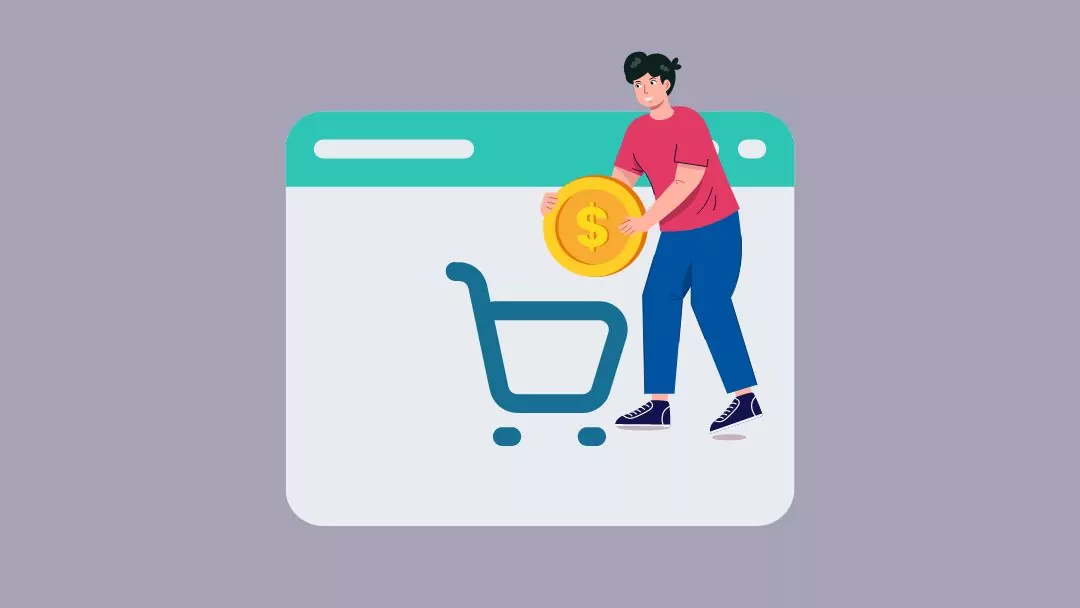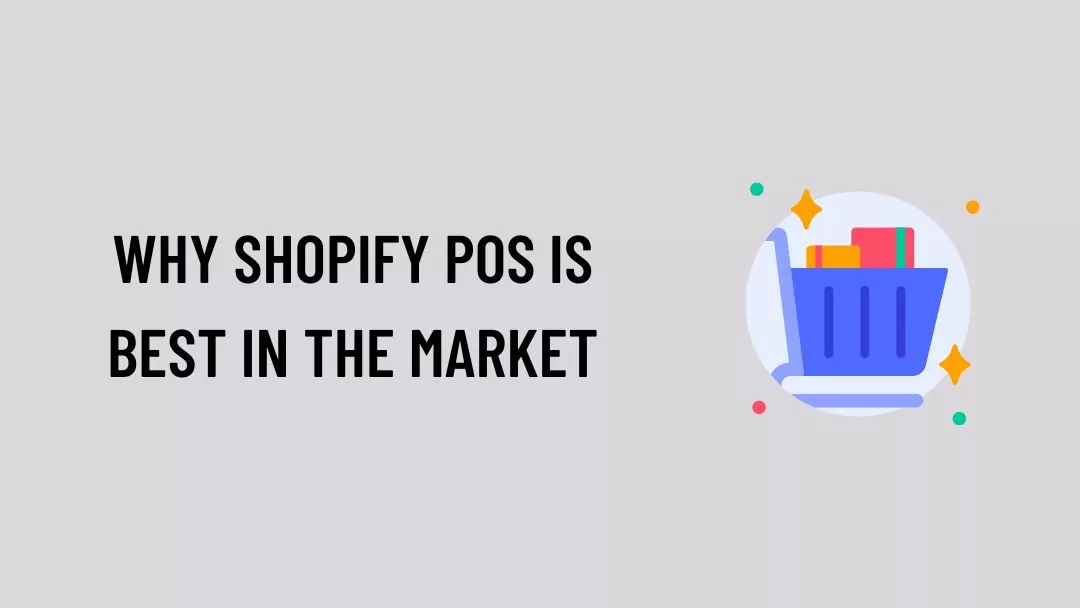Are you looking to build a scalable web application with WordPress but don’t know where to start? You’re not alone. WordPress is a powerful...
If you have ever been to a supermarket, you might have seen a black computer-like device at the cash counter, where the cashier scans your products using a bar-code scanner, and then the total amount pops up along with a receipt. That black computer-like device is known as the POS or Point of Sale system.
POS is one of the things that you will need if you are going to operate your own small business or store. A POS where you can carry out a lot of financial and administrative work of running your business. Also, you can use POS to check inventory for your customers and can even track sales trends and handle transactions.
Table of Contents
What is a POS system?
A point-of-sale (POS) system is a combination of hardware and software that enables you to make sales, accept payments, and check out customers.
What is POS software?
As the name suggests, POS software is the operating system that you will be used to manage physical stores and sell in person. POS software is the one your staff will be using to look for products, add them according to a customer’s order, and accept payments.
Apart from that, POS software also comes with tools like sales reporting, inventory management, and integrated loyalty programs.
What is the difference between POS Software and POS system?
POS software is an operating system. That means the Shopify POS app is considered POS software. After it is installed in a connected device like a tablet, it becomes your cloud-based POS system.
What is Shopify POS & why do retailers need it?

Shopify POS (Point of Sale) is a point-of-sale system designed for retailers to sell in person and manage their inventory, orders, and customers from a single dashboard. It is a cloud-based system that works on both iOS and Android devices and allows retailers to accept payments, track inventory, manage customer data, and generate reports.
Here are some reasons why retailers may need Shopify POS:
Sell in-person
Shopify POS allows retailers to sell in person at brick-and-mortar stores, pop-up shops, markets, or events. The system can be accessed from a mobile device or tablet and accepts various payment methods, including credit cards, cash, and gift cards.
Manage Inventory
Shopify POS integrates with the Shopify e-commerce platform, which means that retailers can manage their inventory across multiple channels, including online and in-store. The system automatically updates the inventory levels when a sale is made and can send alerts when stock levels are low.
Manage Customers
Shopify POS allows retailers to capture customer information, such as email addresses and purchase history, and use it to create targeted marketing campaigns or loyalty programs. The system also enables retailers to manage customer returns and refunds.
Generate Reports
Shopify POS provides retailers with real-time data on their sales, inventory, and customer behavior. Retailers can generate reports on sales by product, location, or staff member and use the insights to make informed business decisions.
Features Of Shopify POS

1. Mobile Checkout
Gone are those days when you had to stand in long queues at a store to make payments. With Shopify POS, you can skip lineups to pay and bring your checkout to customers.
Shopify POS is easy to install on tablets or smartphones, therefore making it a mobile POS (mPOS) system. Having an mPOS is beneficial as you, and your staff can keep an eye on inventory, process sales, returns, and exchanges, and accept payments.
In short, mPOS will provide you with the hassle-free customer service that modern shoppers expect. This will help in lowering the friction when it comes to the buying process, thus resulting in a smoother shopping experience and greater customer satisfaction.
2. Unified Payment Processing
Long before, partnering with a third-party payment processor was the only way to accept payments, but it came with its drawback. In this system, you need to manually enter card numbers and order totals into your payment terminal at checkout, and that was the only drawback. Due to this, there was a risk of under or overcharging customers, and it also slowed down checkout.
Also, this third-party payment came with processing fees, but that used to vary depending on the different credit cards of customer users.
3. Centralized Inventory Management
Most POS software helps in managing store inventory, while others don’t help merchants in managing inventory across multiple channels like multiple store locations, online stores, and warehouses. And that’s the reason effective inventory management is crucial to run a successful operation, whether you are operating one or multiple stores.
So, choose Shopify POS comes with centralized inventory management in a single system; therefore, you can manage everything from one place. Also, this will help in ordering enough stock to fulfill the demand while avoiding overstocking, inventory shortages, and more.
4. Unified Reporting And Analytics
If you sell your products both in-person and online, relying solely on the data collected at your physical store can pose challenges. This is because the data may be isolated to a particular sales channel, which can make it difficult for you to gain comprehensive insights into your brand’s performance. In such situations, you may have to manually combine data from different sources to obtain the insights you need.
To address this issue, POS software that integrates both online and in-person sales can be highly beneficial. With this software, you can access reports that combine data from all your sales channels, providing you with a holistic view of your brand’s performance. Additionally, you can connect this software with other tools like accounting software to streamline your operations further.
5. Offer gift coupons that work online and offline
The popularity of gift cards is on the rise, and they have become increasingly prevalent in recent years. According to estimates, the gift card market in the US was valued at $160 billion in 2019 and is projected to grow to $221 billion by 2024. This growth is attributed to several factors, including the rising popularity of gift cards among millennials and the increasing demand for digital gift cards, which shoppers can redeem either online or in-store.
However, some POS software systems do not offer the option for shoppers to use gift cards in physical stores or to use physical cards for online purchases. This can be frustrating for customers who prefer to pay with gift cards. To prevent this issue, it is essential to ensure that your POS software allows customers to use gift cards to pay for their purchases, regardless of whether they are shopping online or in-store. Providing this flexibility can enhance the customer experience and increase satisfaction.
6. Customer relationship management (CRM)

By connecting to your POS software, a customer relationship management (CRM) tool provides information about customers’ purchasing history, enabling you to personalize your marketing, communication, and customer service strategies based on their buying behavior.
Unlike certain configurations that necessitate utilizing third-party CRM software, Shopify POS keeps track of customers’ purchase history, including their contact details, the items they purchased, the purchase location and time, and the total transaction value.
By combining the built-in CRM functionalities with tools such as Shopify Email, you can boost your email marketing and loyalty programs. This, in turn, enhances customer retention, repeat sales, and overall customer lifetime value.
7. Physical and email receipts
All POS software should offer customers proof of purchase. Receipts not only simplify returns and exchanges but also present an opportunity to gather customers’ contact information and establish a customer profile during checkout.
Delivering electronic receipts via email is an excellent method to gather customer contact information during checkout, expand your email list, and boost your customer retention marketing. However, it’s essential to ensure that customers have given their consent to receive emails from you before sending them any messages.
8. Employee management
As your retail business expands, you will require more staff to serve more customers, offer more services, and manage more complex store operations. Therefore, consider investing in POS software that can assist you in managing your growing team effectively.
Your point of sale (POS) system should have certain basic features as your business expands, such as scheduling and bookkeeping capabilities. It should also provide you with insights into your staff’s performance, such as their average transaction value, daily sales, and average units per transaction.
Assigning specific roles and permissions for your retail staff can simplify their management. These allow you to limit the actions that store associates can perform without managerial approval, such as altering a product’s price or applying a discount to a sale.
The Bottom Line
Now that you know everything about POS systems and software, it’s time to upgrade to the best POS system in the business; Shopify POS.
With the Shopify POS, you can easily receive orders from customers, accept different modes of payment, and synchronize your transactions across multiple channels, all from a single dashboard. Additionally, Shopify POS is highly effective for managing your inventory, fulfilling orders, and analyzing your Shopify sales data across both physical retail locations and online stores. So, don’t wait; upgrade to Shopify POS right away!
Also, Read Our Related Articles:


